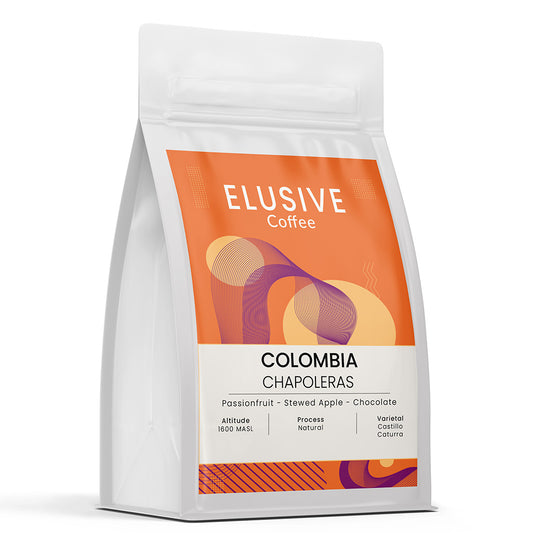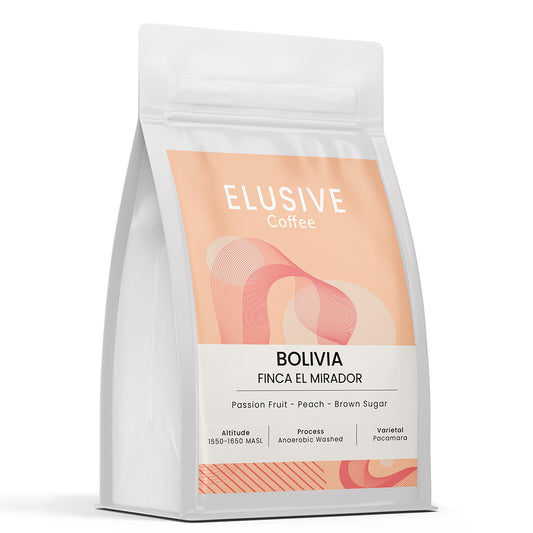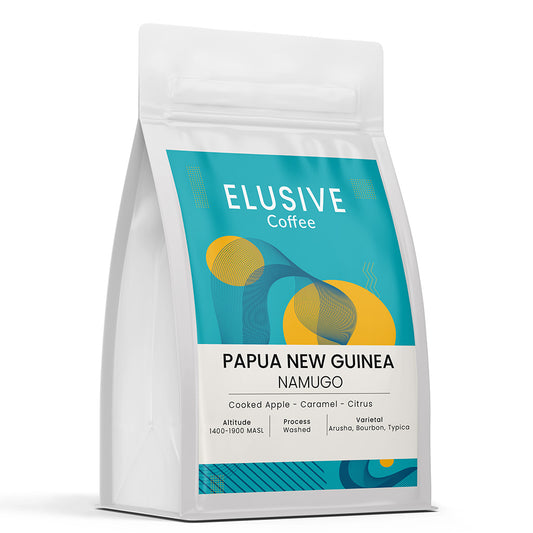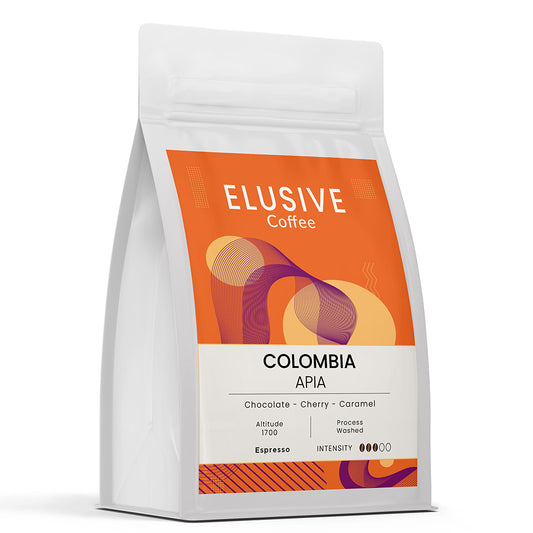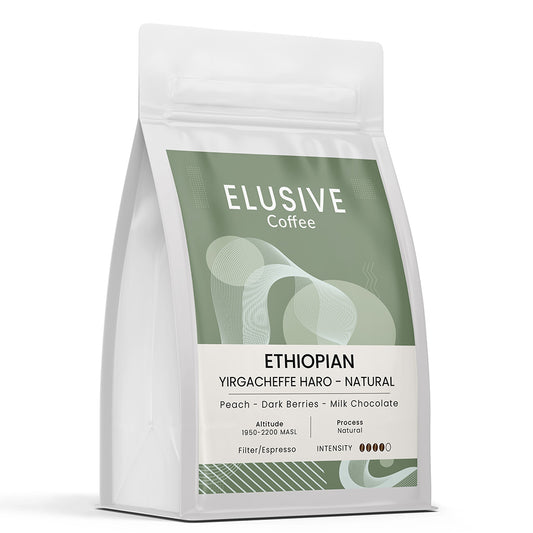Share
Gishamwana Island: Discovering the Elusive Heart of Rwandan Coffee
Imagine an island, floating in the emerald heart of one of Africa's Great Lakes, an island that from the shore seems almost a mirage.1 This isn't a lost world from a forgotten tale, but a living sanctuary dedicated to a single purpose: cultivating some of the most extraordinary coffee on the planet. This is Gishamwana Island.
For us at Elusive Coffee, finding a lot that truly captures the spirit of a place is the ultimate pursuit. It’s a search for coffees that are not just delicious, but deeply resonant, carrying within them the stories of the soil, the climate, and the people who brought them to life. We are incredibly proud to announce that we have secured a rare, organic microlot from this secluded paradise—a coffee that is, in every sense of the word, elusive.
This is more than just a coffee; it's a story of a nation's staggering beauty, a history of profound resilience, a visionary producer, and a coffee of unparalleled quality. It’s a story that begins in the rolling highlands of Central Africa, finds its heart in a lake of fire and water, and culminates in a cup that speaks of hope and meticulous care. Join us on a journey to the Western Province of Rwanda, to the shores of Lake Kivu, and to the very special origin of our next release.
The Land of a Thousand Hills: Coffee as a Symbol of Rebirth
Rwanda, famously known as the "Land of a Thousand Hills" (pays des mille collines), is a small, landlocked country nestled in the Great Rift Valley of Central and East Africa.3 Its geography is a breathtaking tapestry of mountains, verdant valleys, and shimmering lakes. The entire country sits at a high altitude, with an average elevation of 1,700 meters, creating a pleasant, temperate tropical highland climate that is almost perfect for agriculture.6 This unique combination of elevation and climate is the foundation upon which Rwanda's world-class coffee industry is built.
The history of coffee in Rwanda, however, is as complex and rugged as its terrain. German missionaries first introduced coffee plants to the country in the early 1900s, but it was under Belgian colonial rule that production became widespread.3 The colonial government mandated the cultivation of high-yield, low-cost varieties, enforcing a system that prioritized volume over quality and offered little incentive or profit to the farmers themselves.3 For decades, coffee was a tool of economic extraction, not empowerment. This chapter of coercion and commodity-grade production set the stage for a dramatic transformation.
The 1994 genocide against the Tutsi devastated the nation, shattering its economy, its communities, and its coffee sector along with everything else.3 In the aftermath, as Rwanda began the monumental task of rebuilding, a remarkable and strategic decision was made. The new government, along with international aid partners like USAID, identified specialty coffee as a key vehicle for recovery.3 Instead of trying to compete in the low-margin world of commodity coffee, Rwanda chose to pursue quality. This was not an accidental evolution but a deliberate national strategy to create a "new niche agricultural market" and forge a new economic identity.3
This pivot from volume to value was transformative. The construction of the country's first cooperative-owned washing station in 2004, a critical piece of infrastructure for producing high-quality washed coffees, marked a turning point.3 Soon after, Rwanda became the first African nation to host the prestigious Cup of Excellence competition, an event that put the "Land of a Thousand Hills" on the global specialty coffee map and showcased its incredible potential.3
Today, while Rwanda contributes less than 0.2% of the world's coffee supply, its reputation for exceptional quality is immense.3 Coffee has become a true lifeline, providing a primary source of income for over 400,000 smallholder farming families.11 The industry has also played a vital role in social healing. As communities came together to form cooperatives, many of which were led by women who had entered the workforce in the wake of the genocide, coffee became a catalyst for reconciliation and shared purpose.12 Therefore, every bag of high-quality Rwandan coffee represents more than just excellent terroir; it is the tangible result of a nation's courageous choice to build its future on a foundation of quality, resilience, and hope.
The Sparkling Giant: The Duality of Lake Kivu
Our journey takes us to the Western Province of Rwanda, a lush, tropical region bordering the Nyungwe Forest and dominated by one of Africa's most magnificent and mysterious bodies of water: Lake Kivu.1 The lake is an immense inland sea, the sixth largest in Africa, stretching nearly 100 km long and plunging to depths of almost 500 meters.16 Its surface sits at a breathtaking altitude of 1,460 meters (4,790 feet), cradled by the majestic mountains of the Albertine Rift, the western branch of the Great East African Rift Valley.6 Along its shores, vibrant towns like Gisenyi (now Rubavu), Karongi (formerly Kibuye), and Rusizi (formerly Cyangugu) serve as gateways to its tranquil beauty.20
The lake's very existence is a product of intense geological forces. Formed millions of years ago by volcanic activity, its basin is part of a landscape that is still being actively shaped.16 Nearby volcanoes, like the active Mount Nyiragongo, are a constant reminder of the powerful forces at play beneath the earth's crust.16 This volcanic heartbeat, while posing its own risks, has blessed the region with incredibly fertile volcanic soils—a dark, mineral-rich foundation that is ideal for cultivating complex and flavorful coffee.10
Yet, beneath its serene, sparkling surface, Lake Kivu holds a deep and dangerous secret. It is a rare "meromictic" lake, one of only three in the world known to contain vast, highly concentrated layers of dissolved gases, primarily methane (CH4) and carbon dioxide (CO2).16 These gases, trapped in the lake's deep, cold layers by the pressure of the water above, pose a significant threat. Scientists have found evidence of massive local extinctions occurring roughly every thousand years, likely caused by a catastrophic event known as a "limnic eruption" or "lake overturn," where the gases could suddenly erupt, creating a suffocating cloud over the densely populated basin where over two million people live.16
This profound duality—a place of life-giving beauty that harbors a potentially life-threatening power—serves as a powerful metaphor for Rwanda itself. The nation's tranquil, verdant hills belie a history of immense trauma, yet its people have shown incredible strength in harnessing their collective energy for progress. In a stunning display of this spirit, the danger of Lake Kivu is being transformed into an asset. The KivuWatt project, a groundbreaking power station floating on the lake, is now extracting the deadly methane gas from its depths and converting it into clean, renewable electricity for the national grid.16 This ingenious solution turns a geological liability into a source of sustainable energy and economic development. The coffee grown on the shores and islands of this lake is therefore a product of an environment defined not just by its beauty, but by its profound challenges and the inspiring ingenuity required to overcome them.
Gishamwana Island: A World Apart
A short boat ride from the mainland shore, Gishamwana Island rises from the waters of Lake Kivu.1 This is not just another farm; it is a world apart, a self-contained ecosystem that represents a near-perfect, controlled environment for coffee cultivation. Its isolation is the very key to its exceptional character, creating a pristine micro-terroir that mitigates many of the challenges faced by mainland growers.
The most significant advantage of this isolation is a natural quarantine. The island's separation from the mainland means that "many diseases and pests quite simply have not made the boat ride over".1 This includes the notorious Antestia bug, which can introduce a devastating "potato defect" flavor into coffee cherries, a persistent problem in the Great Lakes region.9 This natural protection makes organic farming not just a choice, but the island's inherent state, allowing the coffee to thrive without the need for chemical inputs.
This natural fortress is layered upon the region's foundational strengths: high altitude and volcanic soil. The farm sits at an ideal elevation of 1500–1650 meters above sea level, where the cool temperatures slow the maturation of the coffee cherries, allowing them to develop greater density and a more complex concentration of sugars and acids.1 The island's soil is the same rich, black humus and volcanic loam found throughout the Kivu region, packed with essential minerals like potassium and phosphorus that are known to contribute directly to a coffee's sweetness, body, and bright acidity.6
What truly sets Gishamwana apart, however, is its canopy. The coffee is grown amidst forestry that provides a "level of shade much greater than is typical for African coffee".1 This dense shade cover is a critical element for quality. It further slows the ripening process, leading to an even sweeter, more complex, and flavorful bean.28 The forest canopy also creates a self-sustaining ecosystem. The falling leaves provide a constant source of natural mulch, enriching the soil with organic matter and helping it retain moisture, which is vital for plant health.28 Furthermore, the trees preserve the area's natural biodiversity, providing a rich habitat for birds that act as a natural form of pest control.28
This commitment to environmental harmony is visible everywhere on the island. The more than 35,000 coffee trees coexist with native forestry, and the farm is home to cows, goats, and even a now-famous albino rabbit that is sometimes seen hopping between the plants.1 Crucially, the entire production cycle is completed on-site. The island has its own washing station, fermentation tanks, and raised drying beds, giving the producer absolute control over every step, from the moment a cherry is picked to the final stage of drying.1 This complete vertical integration is a rarity and is essential for producing a microlot of this caliber, eliminating any risk of quality degradation during transport. Gishamwana is, in essence, an idealized terroir—a place where the full genetic potential of the coffee can be expressed, protected from the compromises and challenges of the outside world.
The Hands Behind the Harvest: Emmanuel Rwakagara & The COOPAC Community
A place, no matter how perfect, is nothing without a person of vision to realize its potential. On Gishamwana Island, and across the wider Lake Kivu region, that person is Emmanuel Rwakagara.1 He is not simply a farm owner; he is the founder and president of COOPAC (Coopérative pour la Promotion des Activités Café), a towering figure in the story of Rwanda's coffee renaissance.32 Born in Congo, Rwakagara moved to Rwanda in 2001 with a singular goal: to re-invigorate the coffee industry and build a future for its farmers.2
This mission is deeply personal, rooted in a multi-generational family legacy. His grandfather, Nzungize Gérard, was one of the pioneering coffee growers in the hills of Rwanda.34 His father established a cooperative in the 1950s, a venture that Emmanuel would later "resuscitate" when he founded COOPAC in 2001.35 He carries with him a deep-seated belief, passed down through his family, that Rwandan coffee, when cultivated with respect for the land and the people, could stand among the very best in the world.34
The growth and impact of COOPAC under his leadership have been nothing short of extraordinary. The cooperative began with just 110 farmers in 2001 and has since grown to include more than 8,000 member families.1 This growth has been built on an unwavering commitment to both quality and community. COOPAC is both Fair Trade and Organic certified, operating numerous washing stations along the shores of Lake Kivu and consistently producing coffees that have earned accolades in competitions like the Cup of Excellence.1
The cooperative's impact, however, extends far beyond coffee. COOPAC invests its resources back into the community with a holistic vision for well-being. The organization has directly assisted in the construction of a school, healthcare clinics, and vital infrastructure like roads and bridges.1 They provide farmers with access to agricultural advisors who teach the latest production methods and run a program to distribute livestock, such as cows and goats, to the most productive members, providing families with additional sources of nutrition and income.1
This is where the story of Gishamwana Island and the broader cooperative intersect in a powerful way. The island farm is privately owned and personally overseen by Emmanuel Rwakagara himself.1 This creates a direct, tangible link between the visionary leader of this 8,000-member community and the specific beans we are offering. The island functions as the cooperative's flagship and beacon of quality. It is a place where, free from external constraints, the absolute peak of quality can be pursued. The success and prestige of Gishamwana coffee elevates the reputation of all COOPAC farmers, helping to secure better prices and market access for the entire community. In turn, the scale and stability of the cooperative provide the foundation that makes such a focused, quality-driven project possible. It is a virtuous cycle where the private pursuit of perfection on the island directly fuels the public mission of community empowerment across the region.
The Profile of a Place: Deconstructing the Gishamwana Cup
Every element of this incredible story—the resilient nation, the volcanic lake, the isolated island, and the visionary community—converges in the final cup. To fully appreciate it, we must understand the specific choices made in variety and processing that unlock its potential.
The Noble Bean: Red Bourbon
The coffee grown on Gishamwana Island is exclusively the Red Bourbon variety. This is a significant choice. Bourbon is one of the two most culturally and genetically important Coffea arabica varieties in the world, a direct descendant of the first coffees cultivated by French missionaries on Bourbon Island (now La Réunion) in the 1700s.41 It is prized by specialty coffee professionals for its potential to produce an exceptionally high-quality cup, particularly when grown at high altitudes.42 While it can be susceptible to disease and generally produces a lower yield than more modern hybrids, farmers who cultivate it are making a clear statement: they are prioritizing quality over quantity. In the cup, Bourbon is celebrated for its elegant complexity, balanced acidity, and profound sweetness, often presenting notes of chocolate, caramel, and nuanced fruit.42
The Art of the Wash: Rwanda's Signature Process
The processing method used on Gishamwana Island is a testament to the region's commitment to quality. It is a meticulous and labor-intensive washed process that includes multiple fermentation and soaking stages, a technique that has become a signature of the best Rwandan coffees.
-
Harvest & Depulping: Only the ripest red cherries are hand-picked and delivered to the island's on-site washing station, where the skin and pulp are removed the same day.1
-
Dry Fermentation: The beans, still coated in their sticky mucilage, are placed in tanks for an initial dry fermentation for 12 to 18 hours. This begins to break down the fruit sugars and develop flavor complexity.
-
Wet Fermentation: The tanks are then filled with clean water for a second, submerged fermentation that can last up to 36 hours. This step further refines the coffee's flavor profile.1
-
Washing & Grading: After fermentation, the coffee is thoroughly washed in long channels. This not only cleans the beans but also acts as a grading method. The highest-quality, densest beans sink to the bottom, while any defective or unripe beans float and are channeled away.2
-
Soaking: In a final step reminiscent of the famed Kenyan process, the clean parchment coffee is soaked in fresh water for up to 24 hours. This step is believed to enhance the coffee's clarity, acidity, and aromatic intensity.
-
Drying: Finally, the coffee is moved to raised African beds, where it will dry slowly in the sun for two to three weeks, carefully turned by hand to ensure even drying and a stable final moisture content.1
This multi-stage process is designed to produce a cup of exceptional cleanliness and clarity, allowing the intrinsic qualities of the Bourbon variety and the unique Gishamwana terroir to shine through without any distracting processing flavors.
|
Attribute |
Detail |
Why It Matters |
|
Origin |
Gishamwana Island, Lake Kivu, Western Province, Rwanda |
A unique, isolated micro-terroir in a world-renowned coffee region. |
|
Producer |
Emmanuel Rwakagara & COOPAC Cooperative |
A visionary leader with a multi-generational legacy, supporting a community of 8,000+ farmers. |
|
Variety |
Red Bourbon |
A prized heirloom varietal known for its exceptional sweetness, complexity, and elegant cup profile. |
|
Altitude |
1,500 - 1,650 MASL |
High altitude slows cherry maturation, creating denser, sweeter, and more flavorful beans. |
|
Process |
Fully Washed (with Double Fermentation & Soaking) |
An intensive, multi-stage process that produces a remarkably clean, bright, and complex cup. |
|
Certifications |
Certified Organic & Fair Trade |
Guarantees environmentally sustainable practices and ethical treatment and payment for farmers. |
|
Our Tasting Notes |
Cooked Currant, Mild Chocolate, Caramel, Juicy Malic Acidity, Mellow Fruit Sweetness. |
A complex and beautifully balanced flavor profile that tells the story of its origin. |
An Invitation to Experience the Elusive
The story of this coffee is the story of Rwanda itself. It is a coffee born from the rich minerals of ancient volcanic soils, nurtured in a protected island paradise, and perfected by a uniquely meticulous regional process. It is brought to life by the vision of Emmanuel Rwakagara and the resilient spirit of the entire COOPAC community, who chose to build their future on the promise of quality.
This is a true microlot—a small, rare, and fleeting offering that captures a specific moment in time from a truly singular place. It is a snapshot of an ecosystem, a community, and a harvest, a taste that cannot be exactly replicated. It embodies the very essence of what we seek at Elusive Coffee.
The Gishamwana Island special lot represents the pinnacle of Rwandan coffee. It is a story of hope and quality in every cup. This extremely limited release is coming soon, exclusively to Elusive Coffee. Prepare to taste a story of resilience, innovation, and unparalleled quality. Watch this space.



